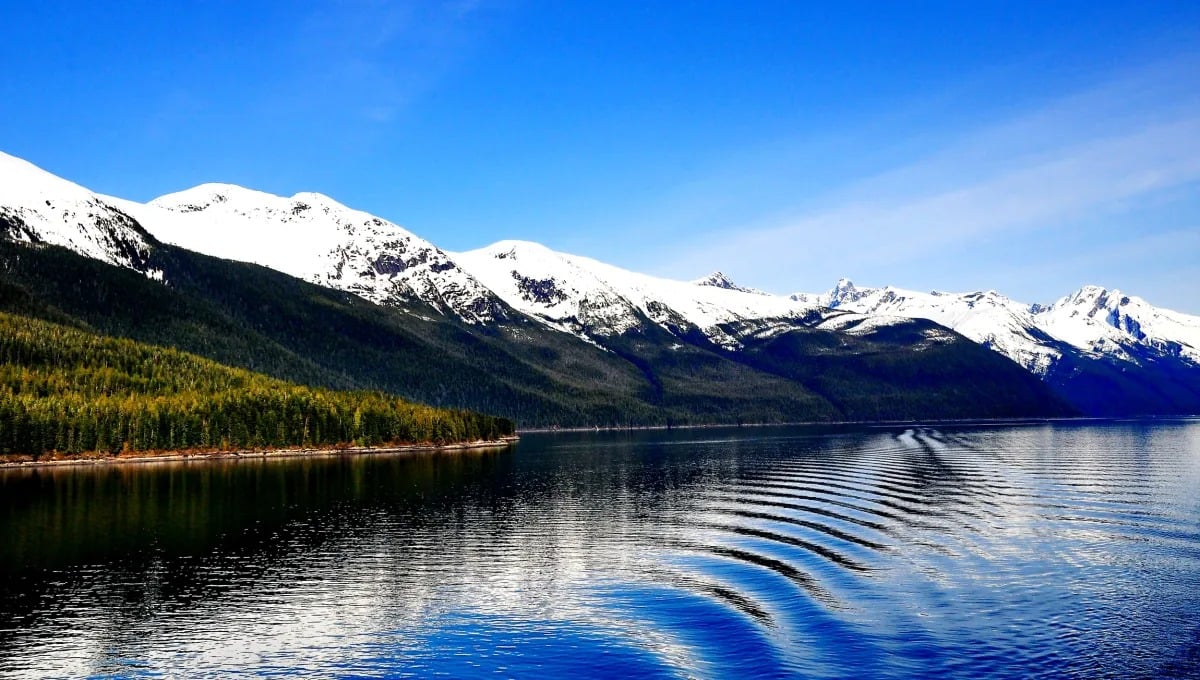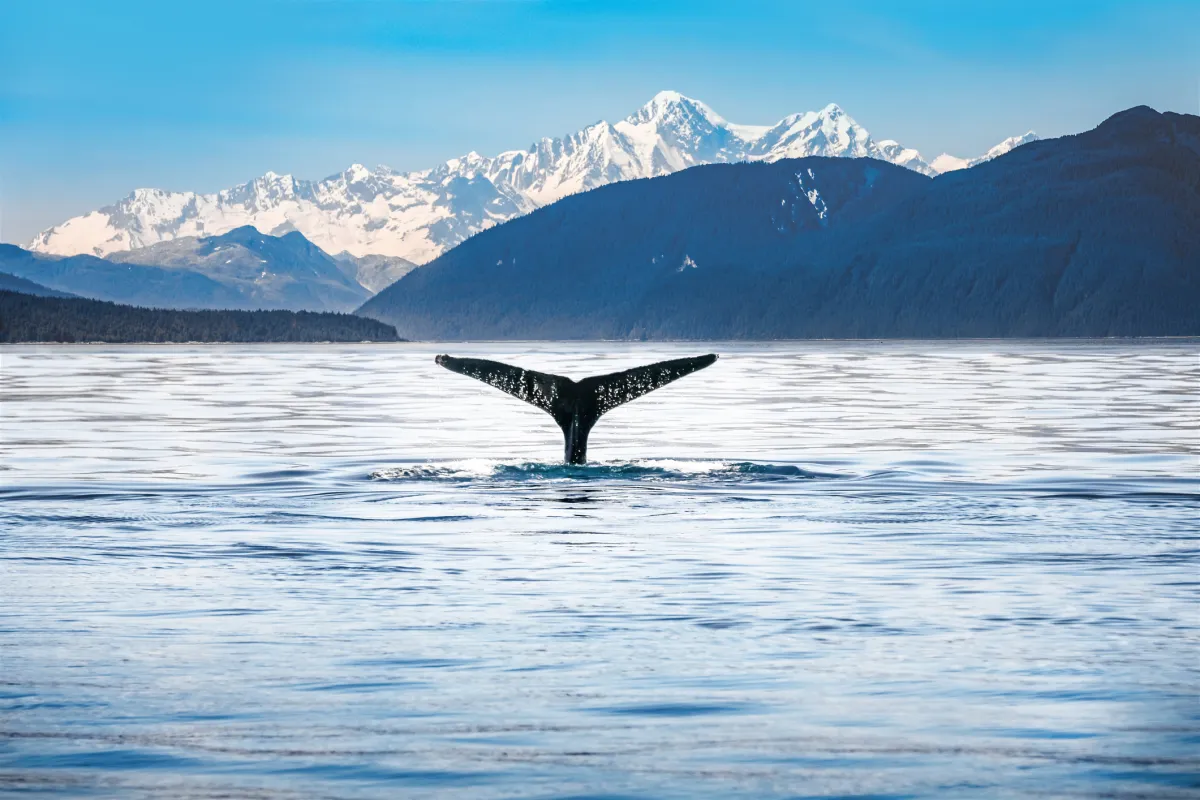
Whales are among the most majestic sea creatures in Alaska waters and are a big draw for cruisers sailing on an epic northern cruise. Whether it's whale watching from your balcony or out on a day's excursion, cruising is one of the best ways to see these massive mammals in their natural habitat.
Whales head north to Alaska for the spring and summer, enjoying the food-rich ecosystems of the Pacific Northwest waters. A diverse range of whale species inhabit Alaska, including massive blue whales, humpback whales, grey whales, and the extremely cute beluga whales.
Depending on when you cruise, you will have the opportunity to view different species of these incredible animals in the waters off Alaska. Luckily, the Alaska cruise season corresponds with whale migration patterns, making a cruise to Alaska one of the best ways to see whales.
Here is a month-by-month guide for whale watching on an Alaska cruise to make the most of your whale-watching experience.
Why do whales visit Alaska each year?
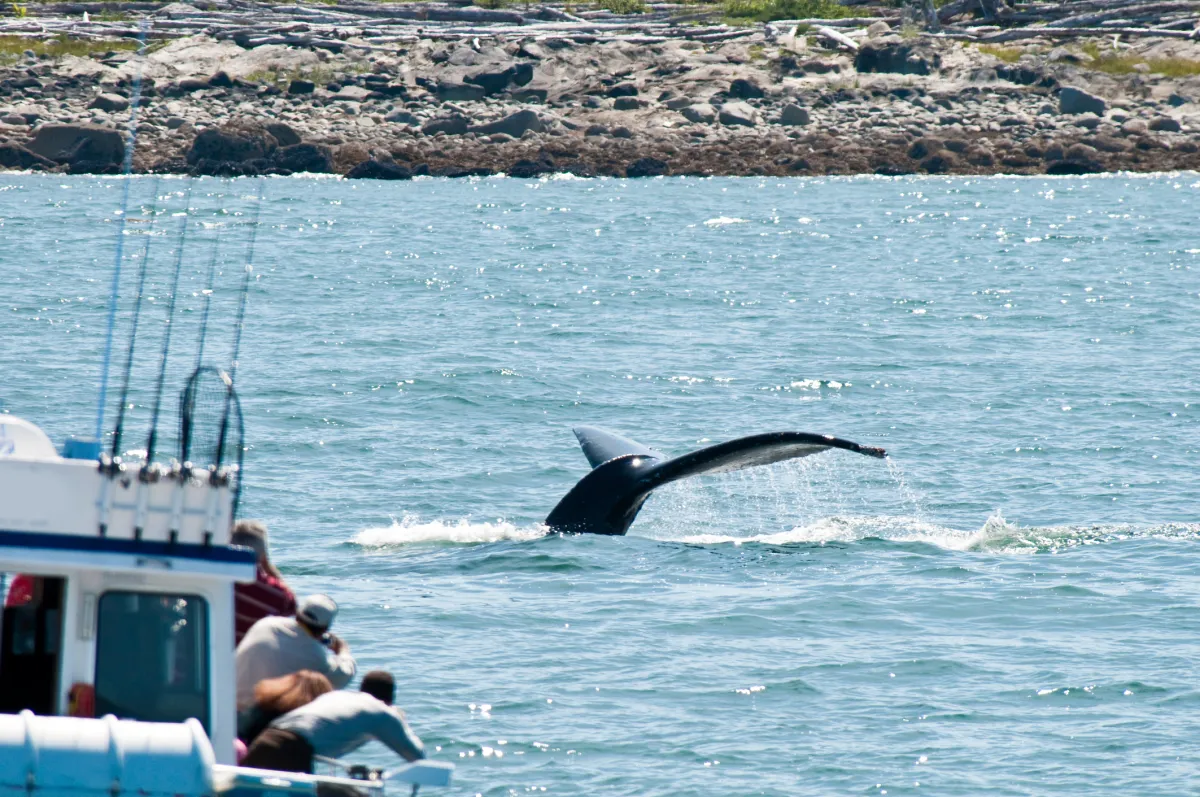
Whales are migratory and travel throughout the year, often thousands of miles, spanning oceans and visiting different continents. After spending winters in regions such as Hawaii, California, Mexico, and Central America, whales head north to cooler waters for their summer vacation.
There are numerous ways to see whales while cruising to the Last Frontier. Some lucky cruises may have the opportunity to see them from their cruise ship, although excursions can be one of the best ways to see them. A good pair of waterproof binoculars is a great investment for cruisers who want to improve their odds of seeing these aquatic giants.
There are many tour operators in Alaska ports, and some even guarantee that you will see whales or you will get your money back. The more adventurous cruiser may find kayaking to be the ideal way to get up close with these larger animals.
May
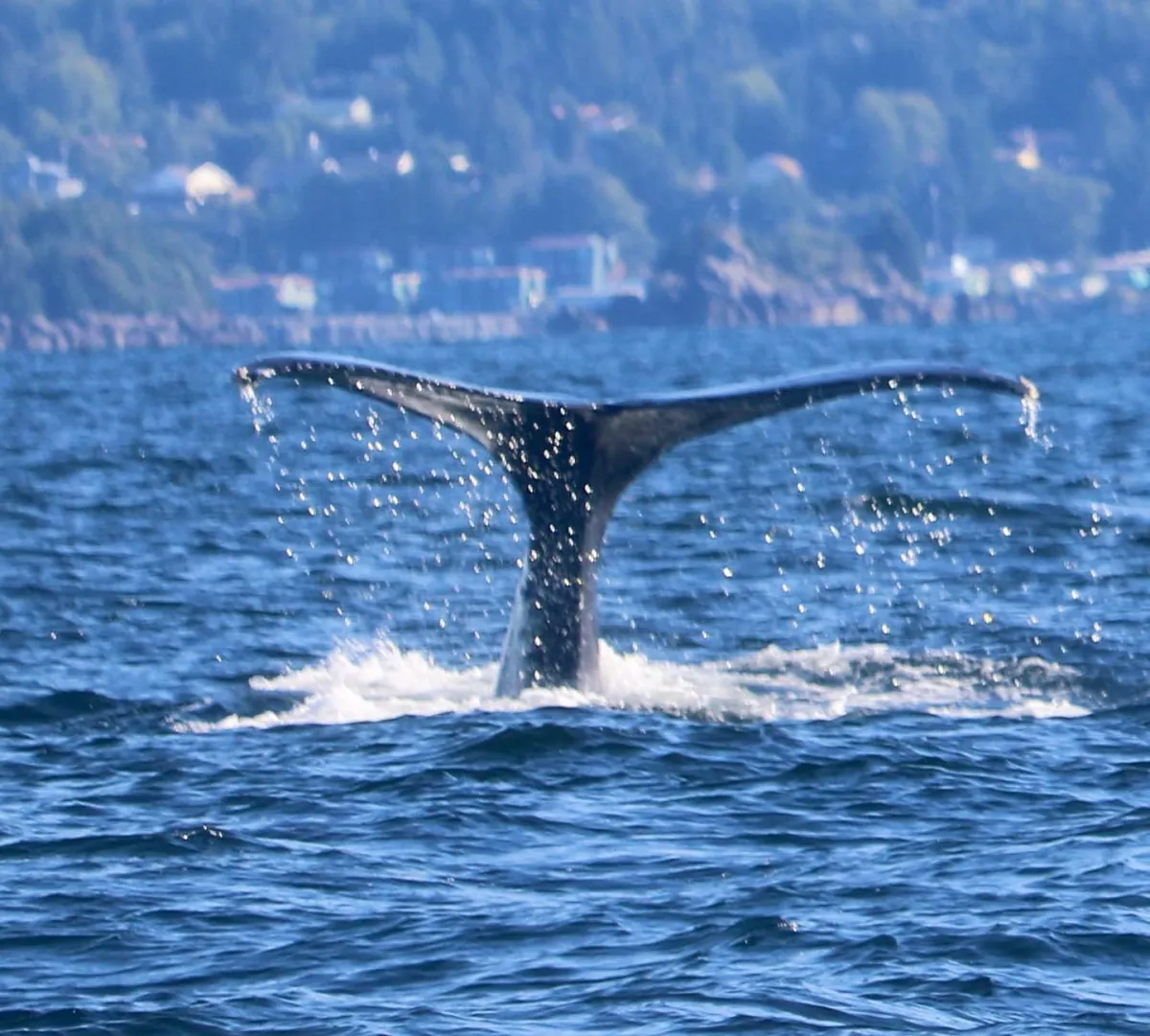
Although the temperatures can still be cool in May, it is a great time to see whales that are already calling Alaska waters home for their summer break. Among the earliest visitors are humpback and gray whales as they migrate to Alaska's coastal waters to feed.
So named for their slate grey coloring, grey whales can grow to almost 50 feet and can easily be distinguished from humpback whales as they have no dorsal fin. Surprisingly, they are bottom feeders that feed off crustaceans. They are considered to be slow swimmers in the whale world and tend to live in small groups. Grey whales feed around Kodiak, Sitka, Ketchikan, and Seward.
Humpback whales are incredibly powerful swimmers and can grow to 50 feet in length. Despite their massive size, they feed off krill, small shrimp-like animals. Unlike some other species of whales, they don’t live in social groups and may be seen on their own or with one or two other whales. A great place to see whales, Juneau is not only Alaska's capital but also a hub for whale enthusiasts. Here, the humpback whales are known to showcase their unique bubble-net feeding during the early summer months.
June
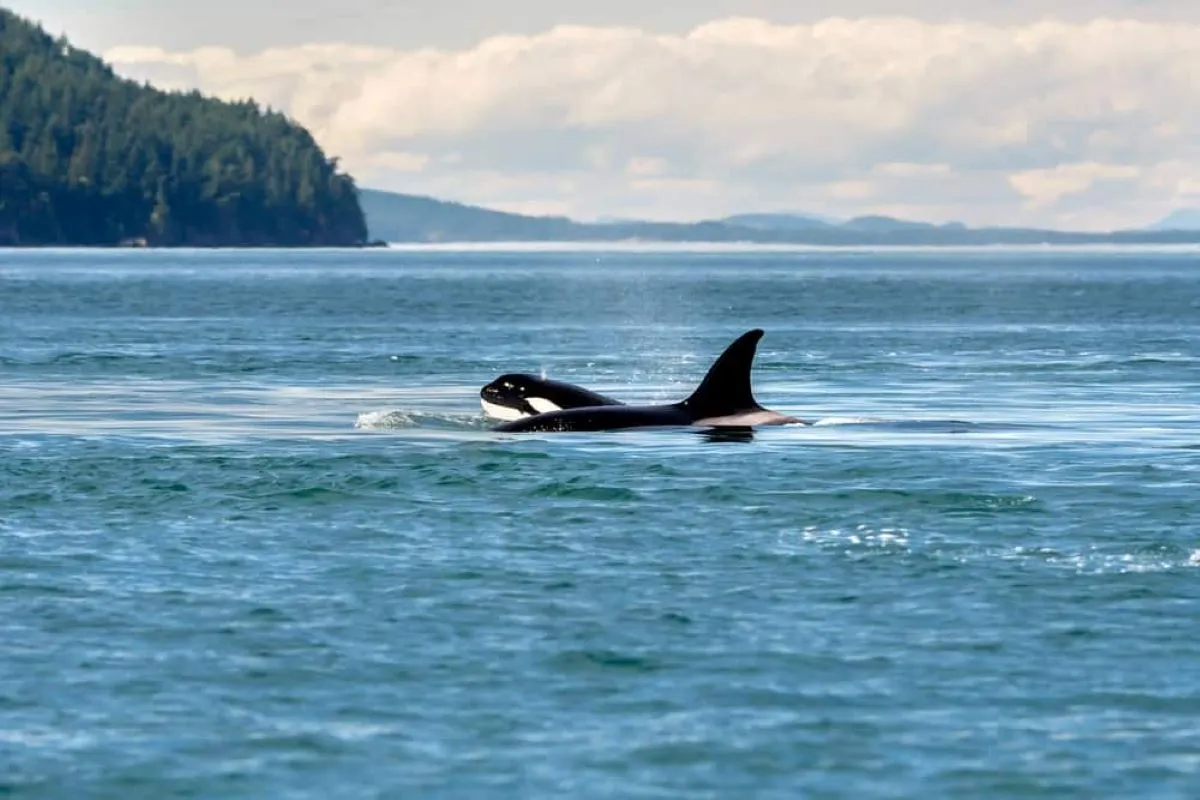
As things warm up, June can be a great month to see whales on an Alaska cruise. In particular, many people are keen to see orcas. Fortunately humpbacks are still present in June, providing many whale-watching opportunities.
Orcas, also referred to as killer whales, are not actually whales but are the largest members of the dolphin family. The story goes that ancient sailors saw them hunting on whales and thereafter called them whale killers. Over time, this somehow became reversed to killer whalers. Not as ruthless as they sound, they do feed on fish, porpoises, seals, sea lions, and some whales, all known to frequent the waters of Alaska.
Orcas are prevalent in many areas, including Ketchikan, Juneau, Icy Strait Point, Skagway, and Victoria, British Columbia.
July/ August
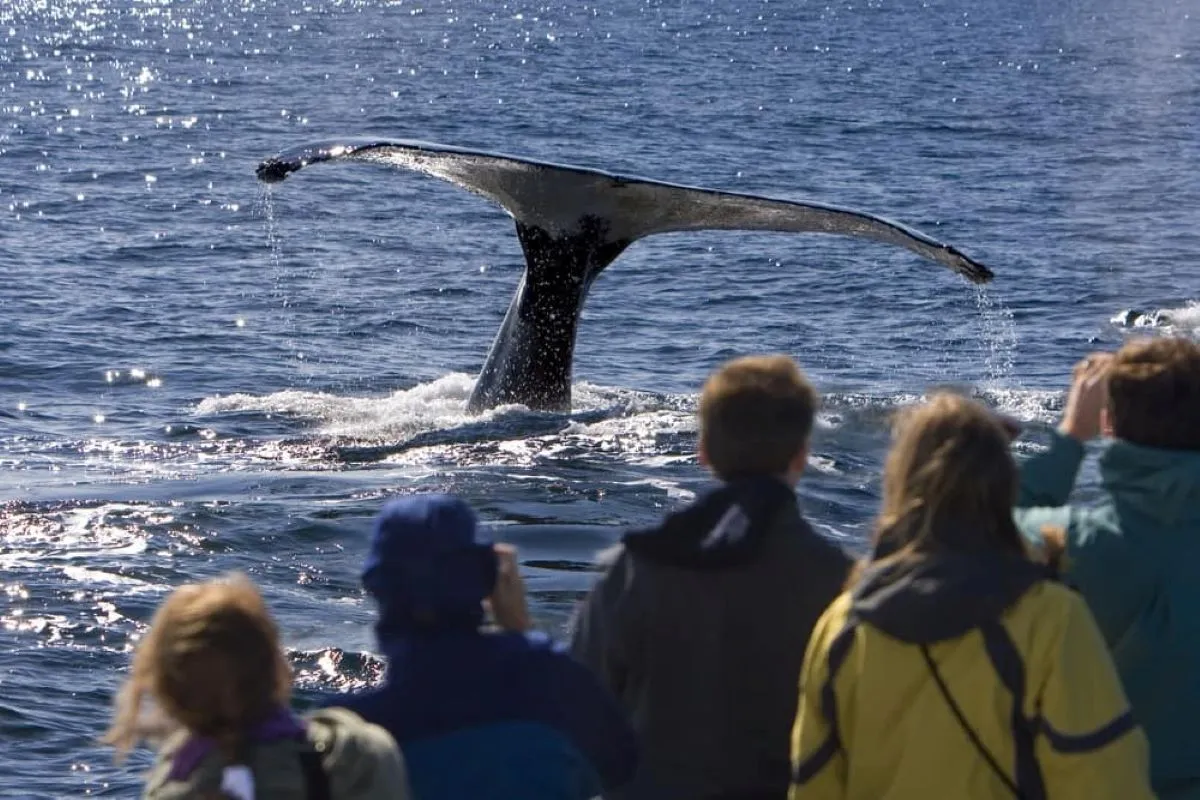
The main summer months are the busiest of the cruise season and continue to be an opportune time to see whales. With the popularity of these types of excursions, it is recommended to book activities early so as to not miss out.
July and August are good times to see beluga whales. One of the smallest whale species, they can grow up to 12 feet in length. Their distinctive color and prominent foreheads make them easily identifiable. Unlike most other whales, the beluga has a very flexible neck that enables it to nod and turn its head in all directions, adding to its personality and popularity. They are often called "sea canaries” due to their extensive repertoire of whistles, grunts, and clicks.
Belugas tend to travel in groups and are often seen south of Anchorage along Turnagain Arm from mid-July through August when salmon are running. They may be seen from shore near Nome on the Seward Peninsula as they follow the cod migration down the coast in the fall.
Summer also presents a chance to see one of the more elusive whale species - the blue whale. The largest mammal to have ever lived on earth, they grow up to 100 feet long. They can be seen in open waters of the northern and eastern portions of the Gulf of Alaska in July and August before wintering in Mexico, Central America, and the western and central Pacific. They can be one of the hardest whales to spot, as they favor open waters and are tough to see from shore.
September
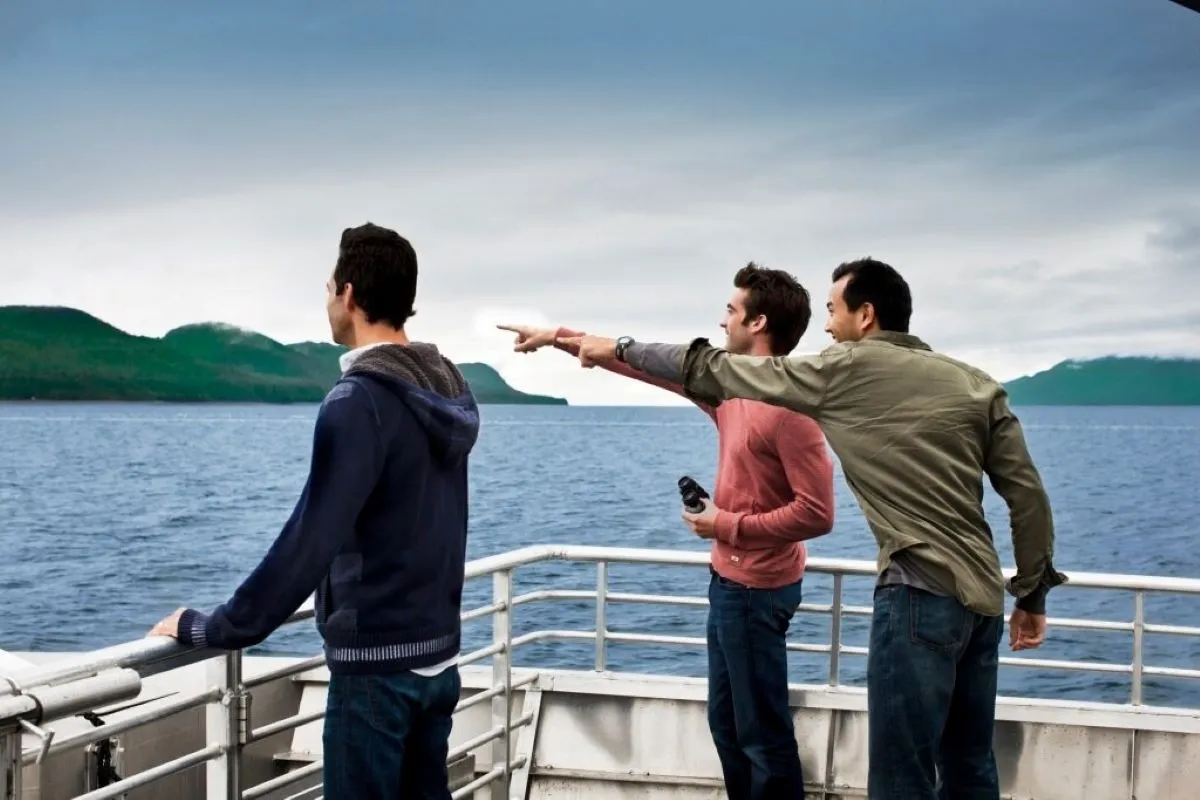
Although not as prevalent, there is still an opportunity to see whales while cruising in September, as many are still in the northern waters before embarking on their long journeys south for the winter.
Several pods of orcas reside in Prince William Sound and humpback whales can still be seen. You might also have the opportunity to witness activities like bubble-net feeding, where humpbacks work together to catch fish at this time of year.
September tends to be less busy with cruises, as kids go back to school and families finish summer holidays. It can be a great time to still see whales, with some of the lowest cruise fares of the Alaska cruise season. With cruise prices dropping as much as 50% from peak season in July and August, cruisers can put their savings toward a picture-perfect whale-watching excursion.

